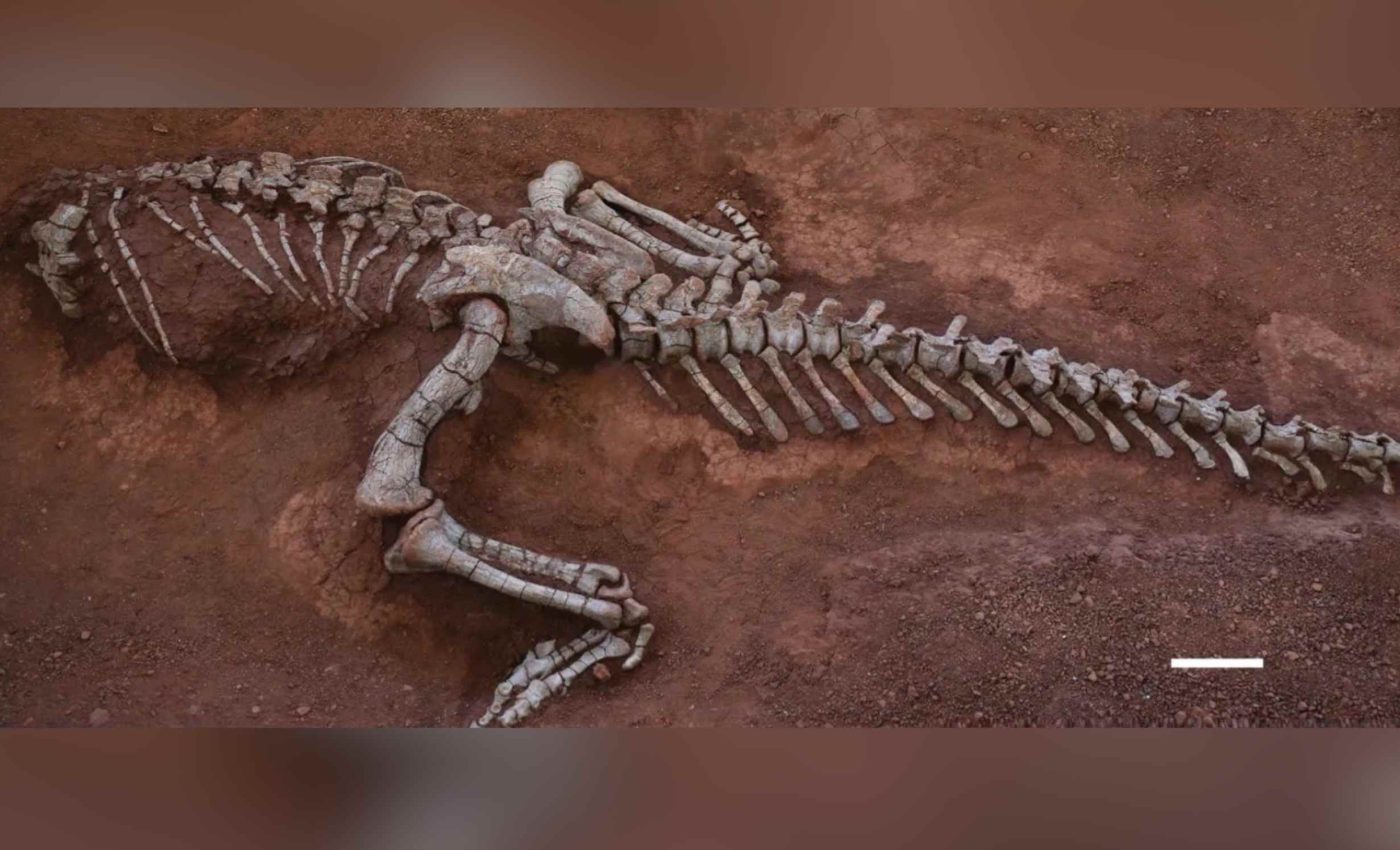
Scientists discover a 33-foot Jurassic giant, twice as big as its cousin
Larger sauropodomorph dinosaurs from the Early Jurassic keep amazing scientists. A striking example is Xingxiulong yueorum, an animal believed to measure as much as 33 feet in length.
These long-necked creatures likely roamed southwestern China roughly 190 million years ago. They once inhabited the lufeng formation, a treasure trove of dinosaur fossils dating to the Early Jurassic.
Excavations in that area led to this exciting discovery. This discovery involved collaboration led by Dr. Xiang-Yuan Chen from the Institute of Vertebrate Paleontology and Paleoanthropology (IVPP) and the University of Chinese Academy of Sciences.
Xingxiulong: An early branch
Experts classify Xingxiulong yueorum as an early branch of massopoda, a group proposed in 2007.
The animal shows distinct skeletal traits linked to its primitive sauropodomorph roots, pointing to features that would appear in larger species.
“Xingxiulong yueorum is distinguished from Xingxiulong chengi by possessing a pendant-shaped fourth trochanter with distal termination, an astragalus with almost straight dorsal margin of the posterior surface, and pedal digit V with two phalanges,” said Dr. Xiang-Yuan Chen.
One of its defining features involves a pendant-shaped fourth trochanter, which is a bony ridge on the femur.
Understanding Sauropodomorphs – the basics
Sauropodomorphs were a diverse and successful group of long-necked, herbivorous dinosaurs that thrived during the Triassic and Jurassic periods.
They represent the early ancestors and close relatives of the colossal sauropods like Diplodocus and Brachiosaurus.
Early sauropodomorphs, such as Plateosaurus, walked on two legs and had relatively lightweight frames, but they already displayed key traits – elongated necks, small heads, and leaf-shaped teeth – that foreshadowed the massive bulk and feeding strategies of their later descendants.
Over time, some lineages grew to enormous sizes and shifted to a four-legged stance, enabling them to support their increasing weight and reach vegetation that no other animal could access.
These dinosaurs played a crucial role in reshaping terrestrial ecosystems. As some of the first large-bodied herbivores, they influenced the structure of plant communities and likely helped shape the evolutionary paths of both predators and flora.
Fossil evidence suggests that sauropodomorphs spread across nearly every continent, adapting to varied climates and landscapes.
Bigger cousin in Xingxiulong genus
This new species stands out as the second known member of the genus Xingxiulong, which until now had only one identified representative.
Paleontologists discovered enough bones to confirm distinct traits and confirm it belongs to the same lineage.
The partial skeleton, unearthed near Lufeng City, shows robust limb bones and a fused set of sacral vertebrae.
Those vertebrae echo a feature seen in later sauropods, signaling that this genus bridged anatomical gaps between older forms and heftier long-necked descendants.
An evolving family
Early sauropodomorphs paved the way for the iconic giants of the Jurassic and Cretaceous periods. Their progress included changes in body structure and size that set the stage for the massive, four-legged herbivores we often see in museums.
“Both the two species of Xingxiulong have four sacral vertebrae, which are typically associated with the late-diverging sauropodiforms and sauropods, suggesting a complex early evolution within the sauropodomorphs,” said the researchers.
That complexity illuminates how certain skeletal features emerged earlier than experts once believed.
Refining the Xingxiulong timeline
Fossil layers in Asia offer clues about dinosaur diversification around 190 million years ago [Hallam, 2021 (University of Chicago Press)].
These clues help place new species like Xingxiulong yueorum on a better-defined branch of the dinosaur timeline.
Continued excavations in Yunnan Province add more detail to this phase of dinosaur development. Evidence from multiple digs supports the view that early sauropodomorph varieties flourished in different habitats across the region.
Why it matters
Dinosaur fossils provide more than just museum attractions. They map out how life overcame challenges and adapted to shifting environments.
“The discovery of Xingxiulong yueorum adds to the diversity of the sauropodomorph dinosaurs from the Lufeng Formation,” said the paleontologists.
This boost in variety clarifies how certain lineages survived shifting ecosystems as the Jurassic period progressed.
A glimpse into early Jurassic China
Early Jurassic landscapes in China included lush plant life, rivers, and floodplains where dinosaurs thrived. Fossil finds from this region highlight how different dinosaur groups occupied varied niches, shaping a rich tapestry of species.
Tracks and skeletal remains reveal that some species favored broader feeding grounds, while others navigated denser vegetation.
This range of dietary and habitat preferences likely influenced how sauropodomorph dinosaurs diversified.
Further studies on Xingxiulong
Each new find sparks fresh questions about how dinosaurs adapted to new pressures. Researchers will continue examining skeletal details to see if similar structural changes occurred in other lines of early sauropods.
Better fossil samples could reveal a wider range of unexpected shapes and sizes within this group. Insights from future digs might reshape how we view the path that led from smaller bipedal animals to gigantic four-legged herbivores.
Closing thoughts
The genus Xingxiulong no longer consists of just one species, and that shift deepens our view of early Jurassic faunas.
Different skeletal traits, including a notable fourth trochanter, show that these dinosaurs had already started exploring new body plans.
New data from Yunnan Province reminds us that our picture of dinosaur evolution is still taking shape. More discoveries and comparisons will likely refine our knowledge of how these long-necked herbivores spread across ancient lands.
The study is published in Historical Biology.
—–
Like what you read? Subscribe to our newsletter for engaging articles, exclusive content, and the latest updates.
Check us out on EarthSnap, a free app brought to you by Eric Ralls and Earth.com.
—–













